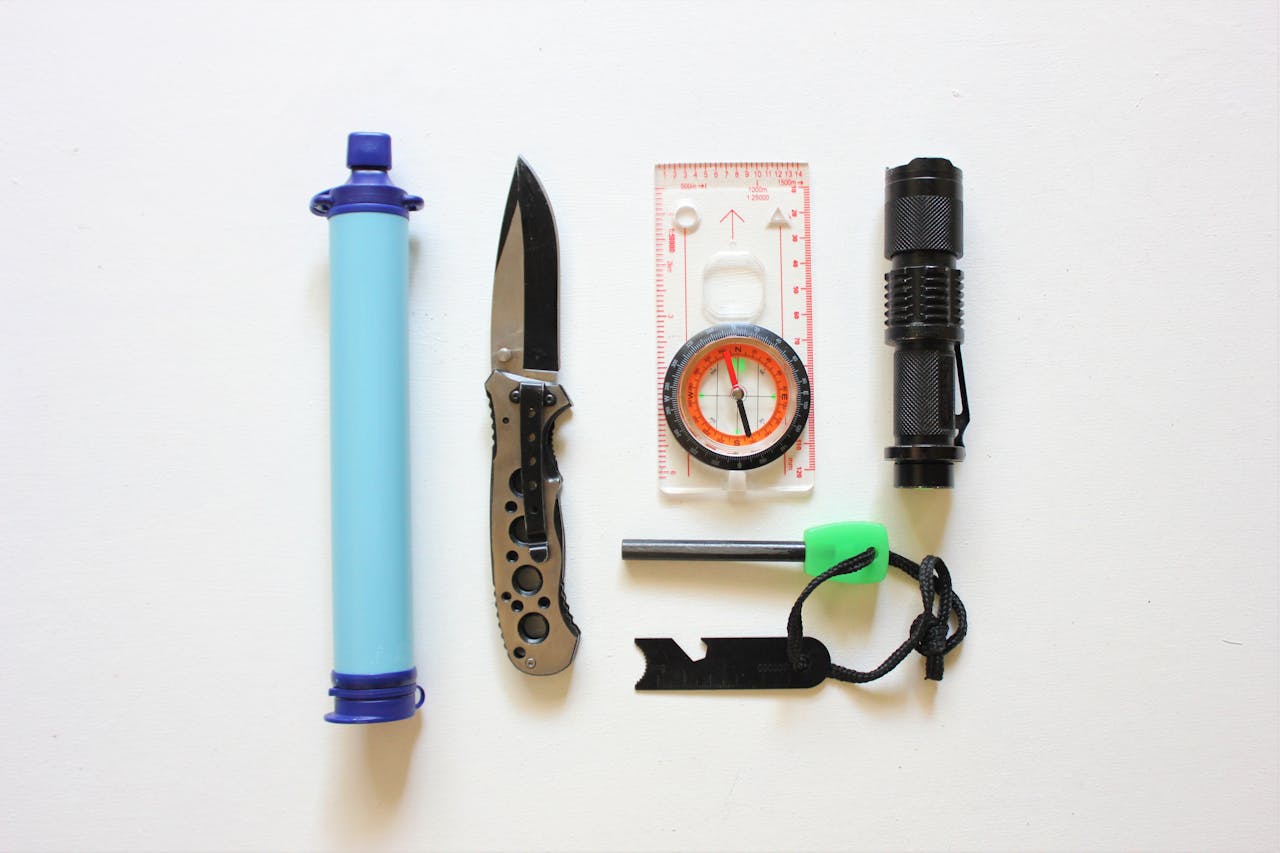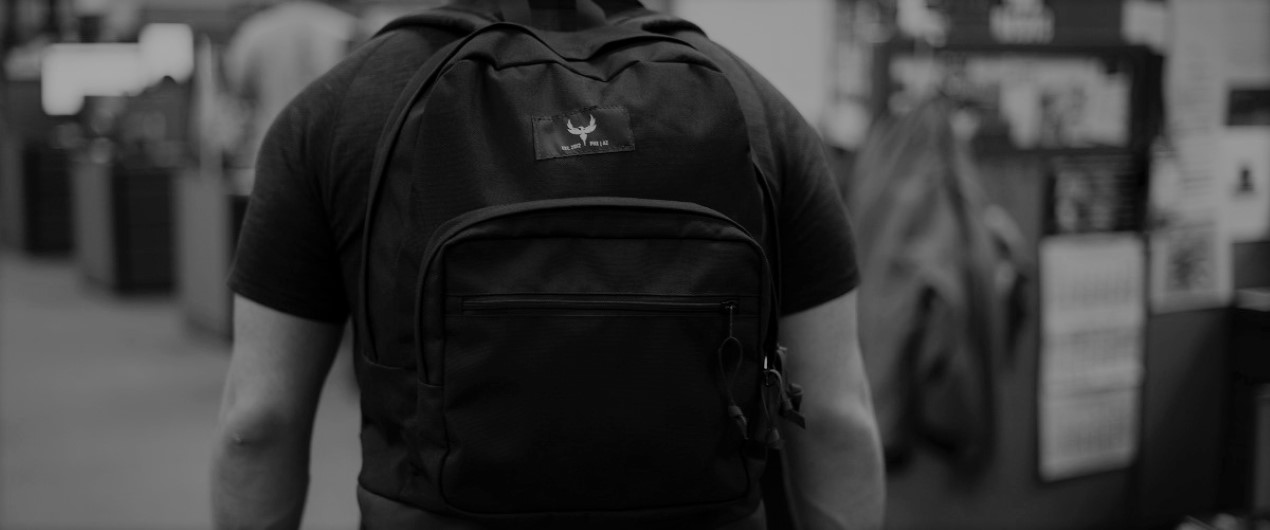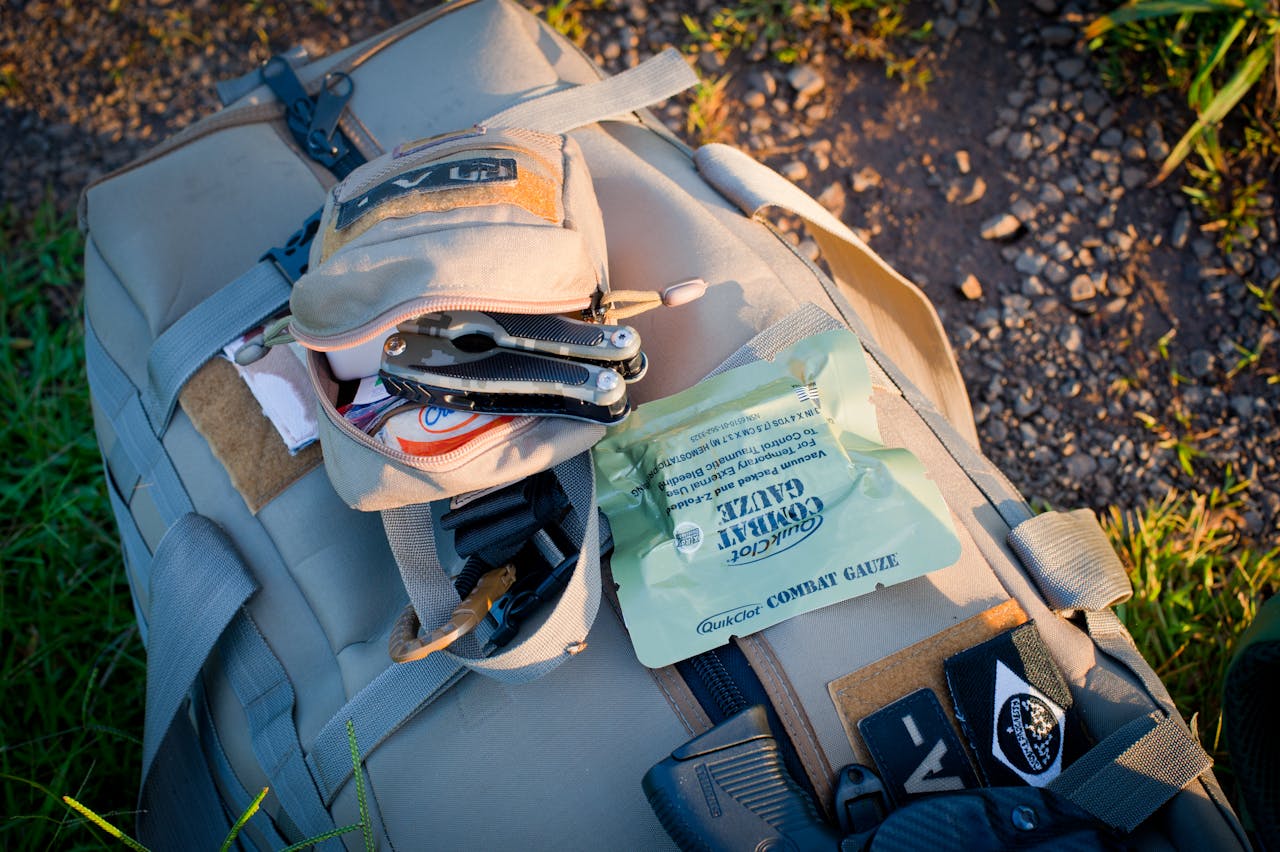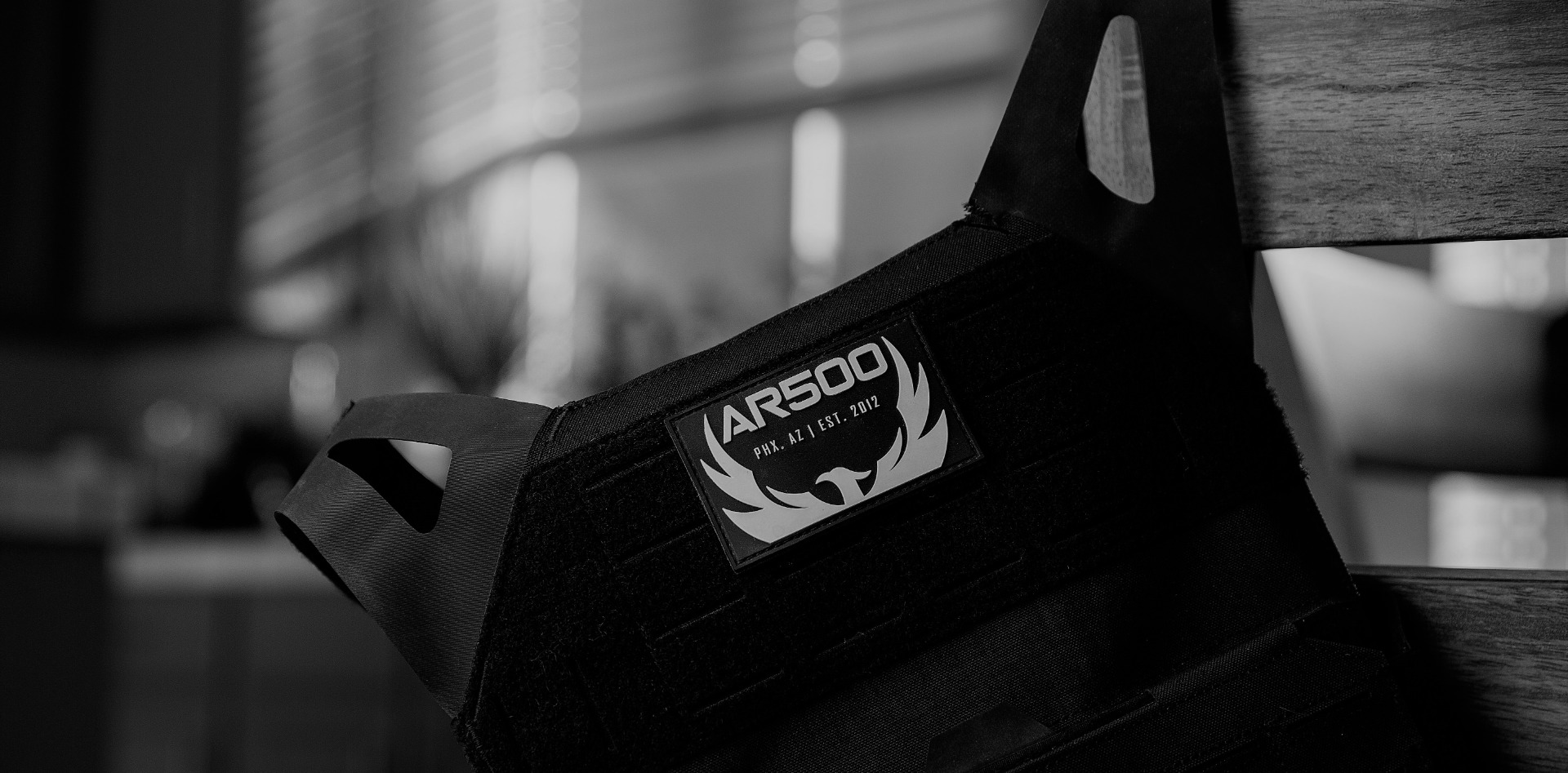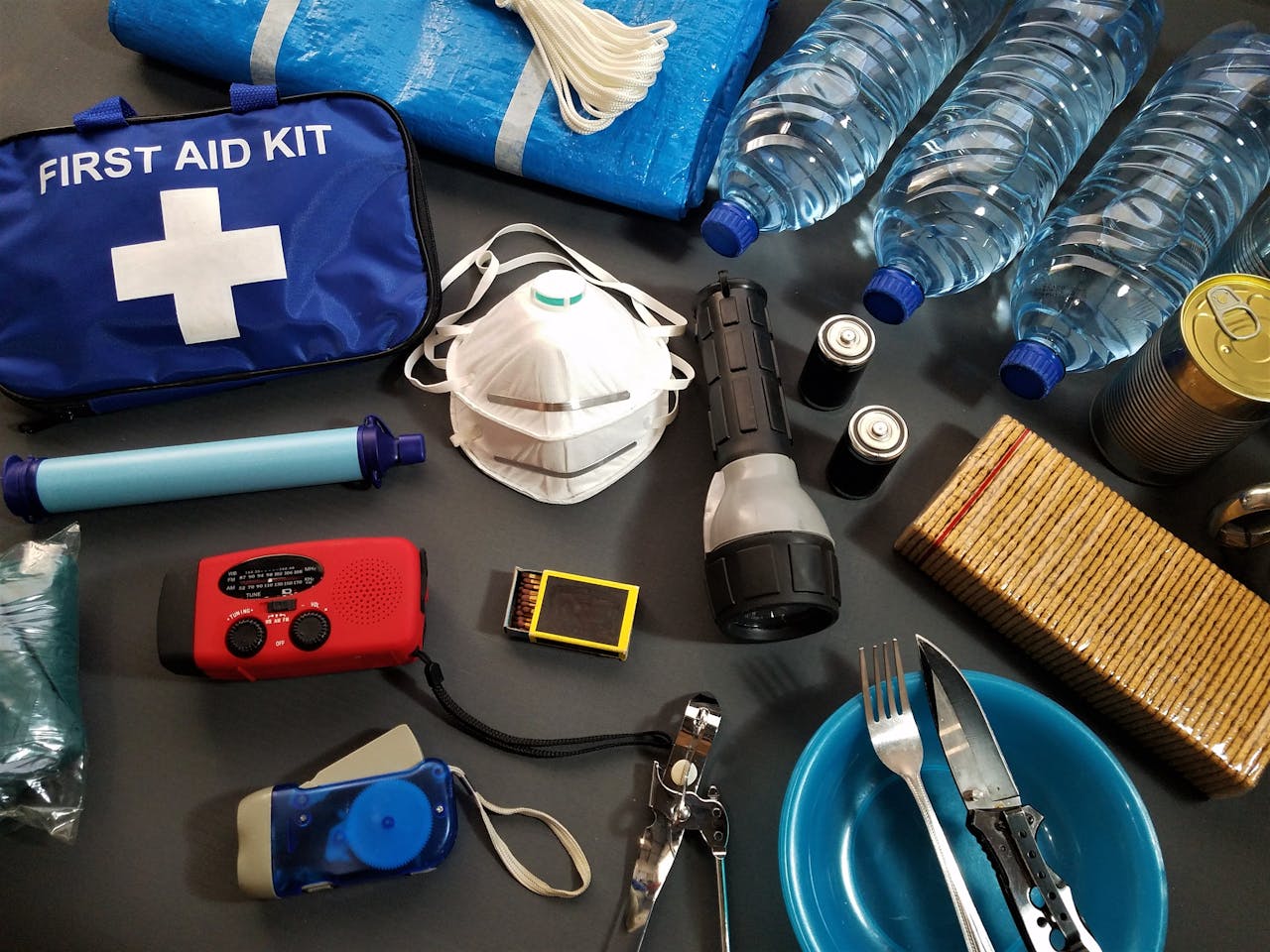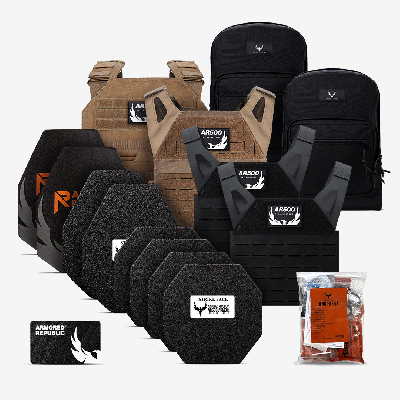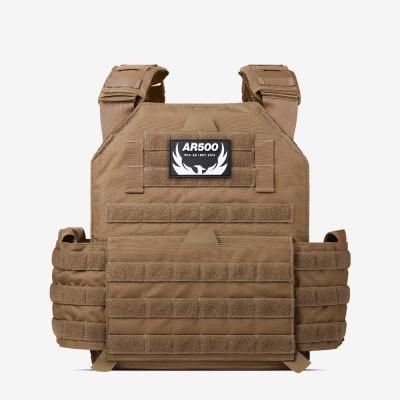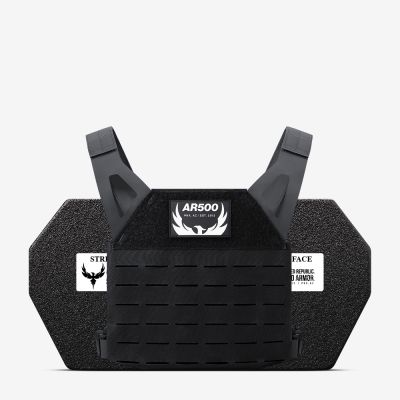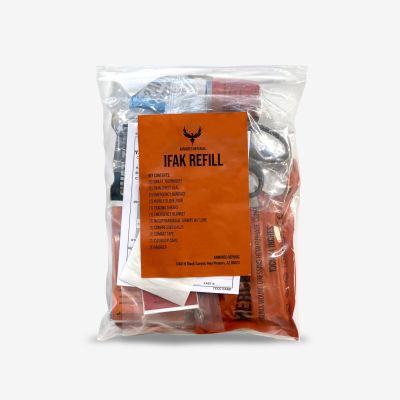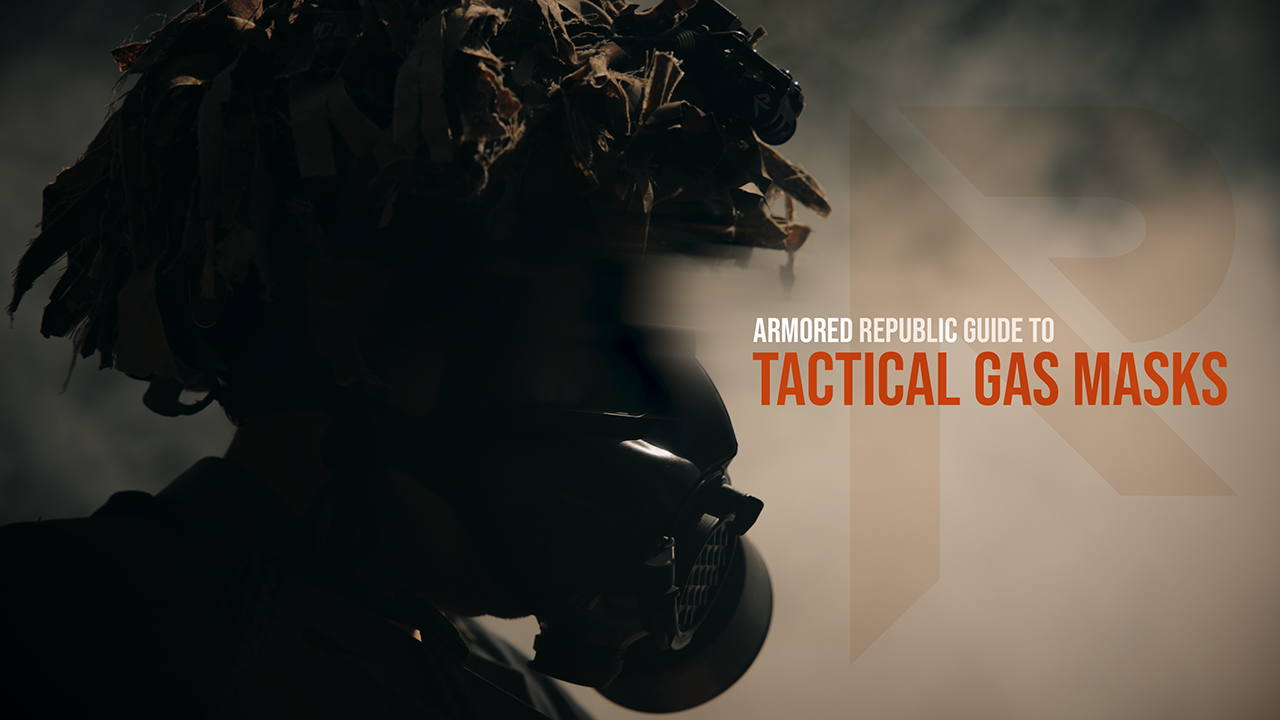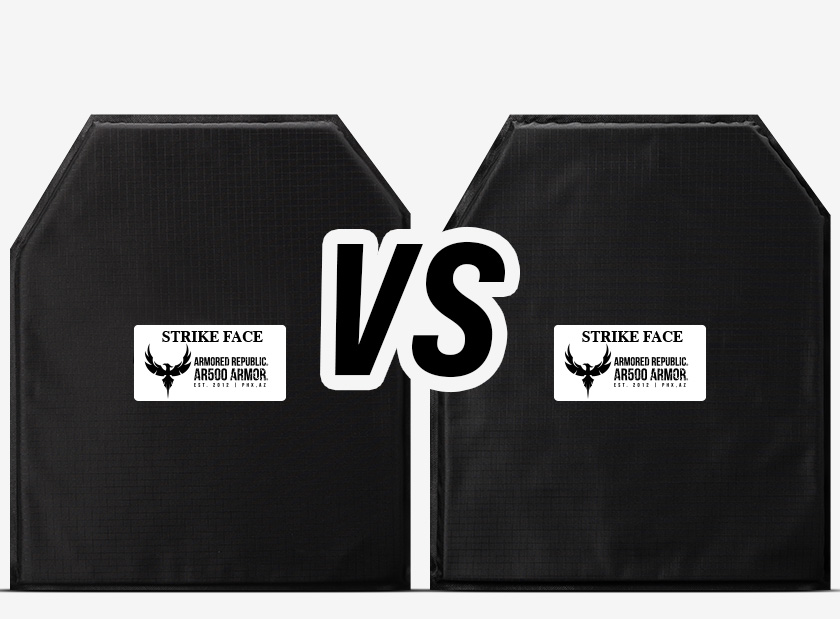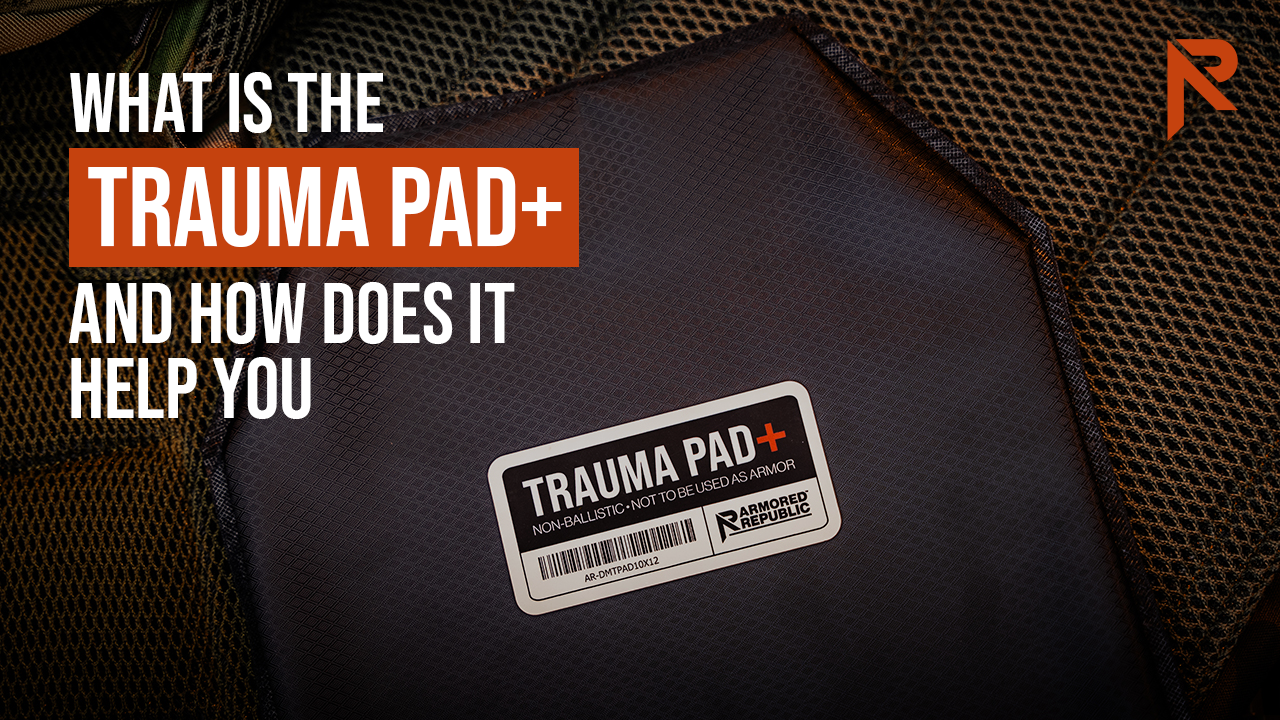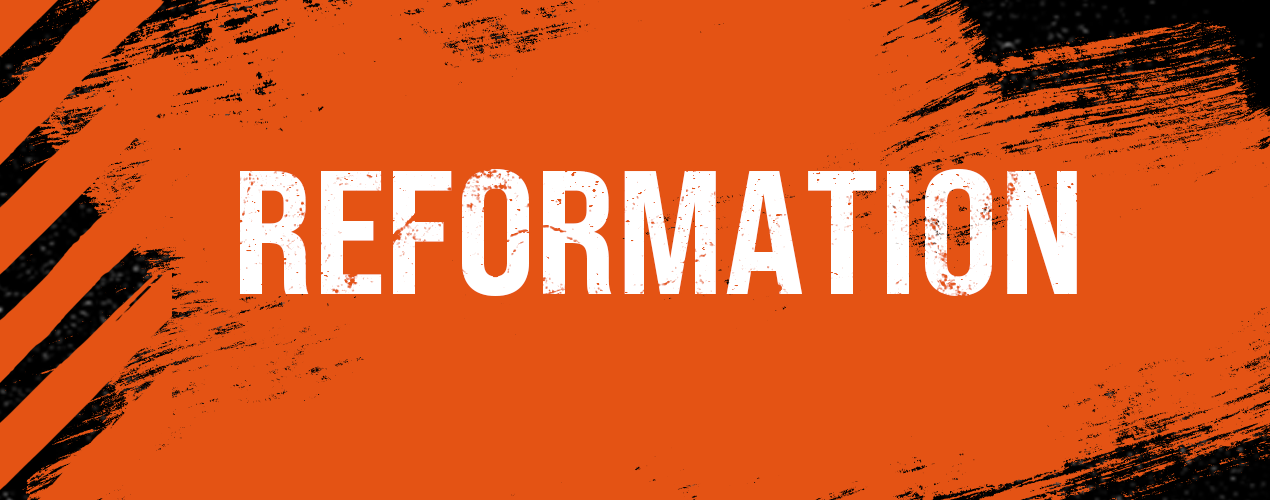The Essential Go Bag Guide for Emergencies - Harden Your Home Series
- By AR500 Armor
- Apr 22, 2024

The Crucial Role of a Go Bag in Home Defense
In today’s unpredictable world, preparedness is key to ensuring the safety and security of your home and family. A go bag—an essential component of any comprehensive home defense strategy—stands as a critical tool for readiness in a variety of emergency situations. Whether facing natural disasters, unforeseen evacuations, or home invasions, having a well-prepared go bag can mean the difference between vulnerability and resilience.
What is a Go Bag?
A go bag is a portable kit that contains all the items one might need to survive for the first seventy-two hours after a disaster or an emergency situation. It acts as a lifeline, providing essential supplies and tools designed to assist individuals and families in the immediate aftermath when resources may be scarce, and immediate help may not be available.
Tailoring Your Go Bag
The contents of a go bag can vary significantly based on geographic location, climate, medical needs, and personal circumstances. For instance, residents in arid or desert regions might prioritize water and sun protection, while those in colder areas might pack extra thermal blankets and clothing layers. Similarly, families with medical conditions need to customize their kits with necessary prescriptions and health-related supplies. This tailored approach ensures that each kit is optimally configured to meet the specific challenges presented by one's environment and personal needs.
Maintaining Your Go Bag
Moreover, the go bag should not be a static kit; it requires regular review and updates to ensure that all items are functional and up-to-date. The perishable items should be replaced periodically, batteries should be checked and replaced as needed, and documents should be updated to reflect any significant life changes.
Empowering Preparedness
In sum, a go bag is not just a collection of items to use in case of emergency—it is a dynamic, personalized emergency response system that plays a vital role in the broader strategy of home defense. By planning effectively and tailoring your go bag to the specific requirements of your household and environment, you can ensure that you and your family are not just surviving, but are well-prepared to handle any crisis with confidence and efficiency.
Essential Items for Your Go Bag
A well-stocked go bag is your first line of defense in an emergency, providing crucial supplies and tools to navigate the initial hours and days after a disaster or threat. Here's a breakdown of essential categories and recommended items to include in your go bag to ensure you’re prepared for any situation.
1. Communication and Power
Staying Connected
- Power Banks: Essential for keeping phones and other small electronics charged during power outages.
- Charging Cables: Include cables for all device types in your household.
- Emergency Radio: A hand-crank or battery-operated radio to receive updates when other communication networks are down.
- Contact Information: Physical list of emergency contacts including family, friends, and local emergency services.
2. Sustenance and Health
Nutrition and Hydration
- Water: At least one gallon per person per day for at least three days.
- Water Filtration System: Portable devices like a LifeStraw or Sawyer Mini.
- Non-Perishable Food: Energy bars, ready-to-eat meals, dried fruits, and nuts.
- Manual Can Opener: For opening canned food without electricity.
Health and First Aid
- First Aid Kit: A pack or kit of basic supplies to handle minor injuries and illnesses.
- Prescriptions: A supply of any medications regularly taken by members of your household.
- Hygiene Supplies: Hand sanitizer, wet wipes, toothbrush, toothpaste, and menstrual hygiene products.
3.Personal Protection and Comfort
Security and Well-being
- Self-defense Items: Items like pepper spray or a tactical flashlight.
- Extra Clothing: Pack a change of clothes suitable for the climate and durable footwear.
- Thermal Blankets or Sleeping Bags: For warmth during power outages or if you must leave home. Ensure you have options for your climate and/or environment.
Comfort and Morale
- Study or Entertainment Items: Books such as your Bible and/or a Survival or Tactical Manuals, cards, or small games to help pass the time and reduce stress.
- Personal Items: Favorite snacks or comfort items that can help maintain morale in stressful times.
4. Tools
Basic Survival Tools
- Multi-tool (e.g., Leatherman, Swiss Army Knife): A versatile tool that combines several functions, ideal for small repairs, adjustments, and emergencies.
- Fixed-blade knife: Offers reliability for tougher tasks like cutting through dense materials or preparing food.
- Duct tape: Essential for quick repairs, sealing leaks, or even medical emergencies like making splints.
- Compact shovel: Shovels are useful for digging latrines, clearing snow or debris, or as a tool in survival shelter construction.
Navigation and Signaling
- Compass: Crucial for navigation when GPS is unavailable, helping maintain direction in unfamiliar terrains.
- Maps of the area: Physical maps are indispensable for navigating when electronic devices fail. If you do not possess the skill, learning to read maps is worth your time.
- Whistle: A simple, effective tool for signaling help in distress situations; vital for alerting rescuers.
- Signal mirror: Used to reflect sunlight and signal aircraft or distant rescuers during daylight hours.
Fire Making and Heat Management
- Firestarter (matches, lighter, ferrocerium rod): Tools to quickly start a fire, crucial for warmth, cooking, and potentially for signaling.
- Emergency blanket: Reflective blankets that help retain body heat and can be used for signaling or makeshift shelter.
Additional Items
- Two-way radios: Walki Talkies or two way radios are esential for communication with family or emergency services when cell phones are not operational.
- Extra set of car keys and house keys: Ensures access to transportation and home without delay in an evacuation.
- Plastic sheeting and duct tape: For emergency repairs on shelters or windows, or to collect and store rainwater.
- Work gloves: Protect hands from cuts, burns, and cold, useful for handling rough materials or during debris removal.
- Extra cash: Crucial for purchasing essentials when electronic payment systems are offline due to power outages or other disruptions.
Essential Tips for Packing Your Go Bag
- Accessibility: Pack items so that the most important ones are easily accessible.
- Waterproofing: Use waterproof bags or containers to protect items from moisture.
- Weight Consideration: Ensure the bag is not too heavy for you to carry, especially if evacuation on foot becomes necessary.
By carefully selecting and organizing these essential items, your go bag will be a critical resource in ensuring your family’s safety and preparedness during any crisis. Regularly revisiting and updating the contents of your go bag is also crucial, as needs and circumstances can change.
Special Considerations for Different Climates
Tailoring your go bag to your specific climate and environment is crucial for effective preparedness. Different weather conditions pose unique challenges, and your go bag should reflect these to ensure you remain resilient in the face of local disasters or emergencies.
Adaptations for Hot and Arid Climates
Essential Hydration and Protection
- Increased Water Supply: Consider packing more than the standard gallon per person per day due to higher hydration needs.
- Sun Protection: Include sunscreen, UV-protective clothing, a wide-brimmed hat, and sunglasses to protect against sun exposure.
- Cooling Items: Cooling towels and a battery-powered fan can help manage heat stress.
Food and Nutrition
- Electrolytes: Supplemental salts and minerals can prevent dehydration and heat exhaustion.
- Lightweight, Non-Perishable Food: Opt for high-energy, low-salt options that won’t increase thirst.
Preparations for Cold Climates
Warmth and Shelter
- Insulated Clothing: Pack thermal underwear, wool socks, and a heavy-duty jacket.
- Emergency Shelter: Include a bivvy or a compact, lightweight tent for emergency shelter from the cold.
- Portable Heat Sources: Consider chemical heat packs or a portable, safe indoor heater (ensure you have appropriate fuel).
Nutrition and Health
- High-Calorie Food: Foods high in fats and proteins can help maintain body heat.
- Moisturizers and Lip Balm: To combat dry and cracked skin caused by cold, dry air.
Considerations for Temperate Climates
General Preparedness
- Layered Clothing: Options to add or remove layers as temperature changes throughout the day.
- Rain Gear: Waterproof jacket and water-resistant boots to stay dry.
- Flexible Food and Water Needs: Standard supplies balanced between extremes.
Tips for Climate-Specific Go Bag Preparation
- Regular Updates: Seasonally adjust your go bag contents to anticipate changing weather conditions.
- Climate-Specific Knowledge: Educate yourself about common disasters in your area like hurricanes, tornadoes, or blizzards and prepare accordingly.
By incorporating these tailored items into your go bag, you can ensure that your emergency preparedness is effective for your specific living conditions, enhancing your ability to cope with and recover from emergencies.
Security and Documentation in Your Go Bag
Ensuring that your go bag includes appropriate security measures and essential documentation is vital for protecting both your identity and property during emergencies. This section covers the key items to include and how to secure them effectively.
Critical Documentation
Essential Documents to Include
- Personal Identification: Copies of driver's licenses, passports, and social security cards.
- Legal and Financial Documents: Copies of wills, insurance policies, deeds, and bank account records.
- Health Records: Copies of medical insurance cards, prescriptions, and contact information for your healthcare providers.
- Emergency Contact List: Comprehensive list of contacts, including relatives, neighbors, and emergency services.
Storage and Protection
- Waterproof Containers: Use waterproof bags or containers to protect documents from moisture and damage.
- Digital Backups: Consider having digital copies stored on a secure USB drive or secure cloud storage as a backup.
Security Measures
- Discreet Packaging: Keep documents and valuable items in unmarked, inconspicuous containers to avoid drawing attention.
- Encrypted Digital Storage: Use encrypted USB drives for storing sensitive digital documents securely.
Tips for Managing Your Security and Documentation
- Regular Reviews: Periodically check the expiration dates of documents and the functionality of electronic devices.
- Accessibility: Ensure that all family members know where documents are stored and how to access them in case of emergency.
Safeguarding Your Essentials with Secure Documentation
In any emergency, having quick access to your critical documents and maintaining security are paramount. By securely packing important personal, legal, and financial documents in your go bag, you ensure that you can manage identity verification, property claims, and access resources without delay. Remember to use waterproof and durable containers for physical copies and encrypted storage for digital backups to protect against all types of threats. Regular reviews of your documentation ensure that your go bag remains up-to-date and ready to serve its purpose, providing peace of mind in the midst of chaos.
Mobility and Accessibility of Your Go Bag
Having a go bag ready is one thing, but ensuring it's both mobile and accessible when disaster strikes is equally important. This section focuses on choosing the right bag and packing it effectively so that it’s easy to carry and use under stress.
Choosing the Right Go Bag
Factors to Consider
- Size and Fit: Select a bag that is large enough to hold all necessary items without being cumbersome. It should fit comfortably on your back or shoulders.
- Durability: Choose materials that are durable and weather-resistant, such as nylon or polyester, to withstand harsh conditions.
- Compartments and Accessibility: Opt for a bag with multiple compartments for easy organization and quick access to essential items.
Type of Bags
- Backpacks: These bags are ideal for most scenarios as they are easy to carry hands-free.
- Duffel Bags: Suitable for those who can store them in a vehicle or do not need to move long distances.
- Wheeled Bags: A viable option for those in urban settings or with physical limitations that make carrying a bag difficult.
- Armored Backpacks: Backpack offering enhanced protection with built-in armor plates while maintaining comfort and mobility.
Packing Your Go Bag
Organizational Tips
- Layering: Pack items you might need first in the most accessible places. For example, medical supplies and water should be easy to reach.
- Use of Packing Cubes and Bags: These can help segregate items by type and urgency, making it easier to find what you need without unpacking everything.
- Weight Distribution: Place heavier items towards the bottom and close to your back to make carrying more comfortable and to reduce the strain on your shoulders.
Regular Maintenance
- Check Periodically: At least once every six months, review the contents of your go bag. Replace expired items, update documents, and check the functionality of all electronic devices.
- Practice Runs: Regularly practice packing and carrying your go bag to ensure you are familiar with its weight and how to handle it quickly in an emergency.
Ensuring Readiness with an Optimally Packed Go Bag
To ensure your safety and readiness in emergency situations, it’s crucial that your go bag is not only well-prepared but also practical to carry and access. By carefully selecting the right type of bag and organizing its contents strategically, you set yourself and your family up for quicker, more efficient responses when emergencies occur. Remember, the goal of your go bag is to support mobility and provide immediate access to essential items. Regular maintenance and familiarity with your bag’s layout and contents are key to maximizing its utility. Stay prepared, stay mobile, and stay safe with a well-equipped go bag that’s ready to go when you are.
Regular Maintenance of Your Go Bag
Maintaining your go bag is essential to ensure it remains effective and ready for use in an emergency. Regular checks and updates are crucial to adapt to changes in your environment, personal needs, and the latest advancements in emergency preparedness.
Reviewing and Updating Go Bag Contents
Importance of Regular Checks
- Expiration Dates: Regularly check and replace expired items, such as food, water, batteries, and medications.
- Seasonal Adjustments: Update your go bag’s contents to reflect seasonal changes, particularly clothing and climate-specific gear.
- Technological Updates: As new products become available that are more effective or compact, consider upgrading to maintain an optimal balance of practicality and efficiency.
Keeping Documents Current
- Personal Information: Ensure that copies of all critical documents are up to date. This includes checking that identification documents, medical information, and financial records reflect your current situation.
- Legal Relevance: Regularly update legal documents such as wills, insurance policies, and property deeds to ensure they remain valid and reflective of any changes in your life circumstances.
Scheduling Maintenance Checks
Creating a Maintenance Routine
- Calendar Reminders: Set up bi-annual or annual reminders to review your go bag. A good practice is to align this with daylight saving time changes or the start of a new year.
- Involvement of Family Members: Engage your household in the maintenance process to ensure everyone knows what the go bag contains and how to use each item. This can be part of a broader discussion about emergency preparedness.
Practice Drills
- Realistic Scenarios: Conduct regular drills using the go bag to simulate an emergency situation. This helps to assess the practicality of the packed items and familiarizes everyone with the bag’s contents and their uses.
- Feedback and Adjustments: Use feedback from these drills to make necessary adjustments to the go bag’s contents and organization.
Cultivating a Culture of Preparedness Through Routine Maintenance
By integrating these maintenance practices into your routine, you ensure that your go bag is always equipped with functional, up-to-date supplies that can effectively support you and your family during an emergency. Regular reviews and updates not only enhance your readiness but also help instill a culture of preparedness within your household.
Incorporating Weapons and Body Armor into Your Emergency Preparedness
In high-risk scenarios where personal safety is paramount, having access to defensive tools such as weapons (handguns, rifles, knives) and body armor can be critical. This section discusses the key considerations for responsibly incorporating these items into your emergency preparedness plan.
Legal Considerations and Safe Storage
Understanding Legal Constraints
- Local Laws and Regulations: Always be aware of and comply with local laws regarding the ownership, storage, and transportation of firearms and other weapons.
- Permits and Licensing: Ensure that all necessary permits are obtained and kept current to avoid legal issues.
Safe Storage Practices
- Secure Storage: Use gun safes or locked storage containers to keep firearms and ammunition secured but accessible in an emergency.
- Safety Protocols: Implement safety measures to prevent unauthorized access, especially if there are children in the home.
Selection and Maintenance of Weapons
Choosing Appropriate Firearms
- Purpose and Suitability: Select weapons that are appropriate for your skill level and the specific needs of your emergency plan (e.g., self-defense, hunting).
- Reliability and Ease of Use: Opt for firearms known for their reliability and ease of use under stress.
Maintenance and Readiness
- Regular Maintenance: Keep all firearms clean and in good repair. Regularly check their operational status and perform any necessary maintenance.
- Ammunition Stock: Maintain an adequate supply of ammunition that is properly stored and rotated to ensure usability.
Incorporating Body Armor
Role of Body Armor
- Protection Levels: Choose body armor that offers an appropriate level of protection for the types of threats you anticipate.
- Practical Considerations: Ensure that the armor fits properly and allows for mobility, especially if you need to evacuate quickly.
Storage and Accessibility
- Ready Accessibility: Store body armor near your go bag or with your emergency kit so it can be quickly accessed and worn in an emergency.
- Maintenance: Inspect body armor regularly for wear and damage, and replace it according to the manufacturer’s guidelines.
Training and Familiarity
Importance of Training
- Weapon Proficiency: Regular training and practice are crucial to ensure that you can safely and effectively use the weapons under stress.
- Armor Usage: Familiarize yourself with how to quickly don and adjust your body armor, as time can be critical in an emergency.
Safety Courses
- Formal Instruction: Engage in formal safety courses for both firearms handling and body armor usage to ensure best practices are followed.
Integrating Defense Tools Responsibly
By incorporating weapons and body armor into your emergency preparedness strategy responsibly, you enhance your ability to protect yourself and your family during critical situations. Ensuring that these items are legally obtained, safely stored, and properly maintained, along with regular training, will prepare you to use them effectively and safely when needed. This integration not only boosts your tactical readiness but also your confidence in handling emergency scenarios where defense capabilities may be necessary.
Ensuring Comprehensive Preparedness for Home Defense
The "Harden Your Home" series highlights the critical importance of preparing an effective go bag as a key element of home defense strategy. It details how to tailor the contents of a go bag to meet specific environmental and personal needs and emphasizes the necessity of keeping these items up-to-date through regular maintenance. Additionally, the series addresses the responsible incorporation of self-defense measures like weapons and body armor, ensuring compliance with legal standards and safe handling practices.
Preparedness represents an ongoing commitment that enhances one's ability to protect their family in emergencies. By maintaining readiness and fostering a culture of preparedness, homeowners ensure that their residences serve not just as homes but as fortresses of safety in times of need. They remain vigilant and prepared, ready to act swiftly and confidently when emergencies arise.
Take Action: Equip and Protect with Armored Republic
As a provider and protector, you have the inherent responsibility to safeguard your family and secure your God-given rights. In an unpredictable world, preparedness isn't just a choice—it's a duty. Armored Republic is here to support you in fulfilling this essential role with our top-tier body armor solutions, designed to complement your go bag kit effectively.
Our body armor is engineered for reliability, comfort, and durability, providing you with the protection you need in critical situations. Whether facing natural disasters, home invasions, or other emergencies, the right equipment is key to ensuring safety and peace of mind.
Don't wait for the unexpected to find you unprepared. Be a man of action today. Equip yourself and your loved ones with AR500 body armor, and take a proactive step towards comprehensive home defense. Your family looks to you for leadership and protection—make the decision to stand strong and prepared. Explore our range of body armor solutions and secure the protection you and your family deserves.
The Family Defense System by Armored Republic
At the heart of our recommended strategy for ensuring home safety is The Family Defense System by Armored Republic. This comprehensive system is more than just a set of tools; it provides peace of mind with its array of advanced armor and essential medical supplies. Tailored to meet the needs of every household, this system exemplifies our commitment to proactive measures over reactive responses, ensuring the safety and well-being of families.
Components of the Armored Republic Family Defense System
Body Armor & Plate Carrier Solutions:
The Family Defense System is meticulously assembled to cater to various protection needs, combining high-quality body armor solutions and versatile plate carrier options to ensure maximum safety and comfort for all family members. Here’s a detailed breakdown of the components included in this system:
- Testudo Lite & C3 Body Armor:
- Plate Carrier: 1 x AR500 Armor® Testudo™ Lite Plate Carrier in Black, offering a lightweight, adaptable fit for rapid deployment and high-stress scenarios.
- Armor Plates: 2 x Level IV C3 Multi-Hit Multi-Curve Body Armor, providing comprehensive protection against high-caliber threats with its advanced ceramic and polyethylene construction.
- AR Freeman Bundle x2:
- Plate Carriers: 2 x Freeman Plate Carrier in Black, designed for quick movement and discreet protection.
- Armor Plates: 4 x A2 Plate - 9"x9" Base Coat, perfectly sized to protect vital body organs from various ballistic threats while maintaining a compact and manageable profile.
- Invictus 2.0 Plate Carrier Bundle:
- Plate Carrier: 1 x AR Invictus Plate Carrier in Coyote - Gen 2 - Medium, featuring modern tactical advancements with enhanced load-bearing capabilities and a quick-doffing system.
- Armor Plates: 2 x A2 Plate - 10" x 12" Base Coat, providing robust defense against higher velocity rounds, suitable for both frontline and emergency response scenarios.
Medical Equipment:
- Individual First Aid Kit (IFAK): Available as an optional add-on, an IFAK is a critical component for managing injuries until professional medical help can arrive. The AR500 IFAK V2 is stocked to treat massive hemorrhage, airway maintenance issues, hypothermia, and more, ensuring readiness for a range of medical emergencies.
Ease of Use:
The Family Defense System is engineered for quick deployment, ensuring that protective gear can be donned swiftly and efficiently, even under high-stress conditions. This accessibility is crucial in emergencies, providing family members the ability to react quickly and effectively.
Additional Features and Accessories:
- Phoenix Armored Backpacks: Discreet yet effective, these backpacks include sewn-in Level IIIA soft armor panels for protection against handgun threats, ideal for everyday carry.
Each component of these body armor configurations were selected to offer the best in modern ballistic protection technology, ensuring that every member of your family can feel secure and prepared, whether at home or in a situation that requires rapid evacuation. The strategic combination of lightweight carriers and heavy-duty armor plates balances comfort with exceptional defensive capability, making the Family Defense System by Armored Republic an unparalleled choice in home defense solutions.
This system isn’t merely about defense; it’s about ensuring a level of preparedness that can significantly alter outcomes in critical situations. By choosing the Family Defense System by Armored Republic, you're not just purchasing equipment—you're investing in a comprehensive protection solution for your loved ones. Equip your home with the defense system it deserves and experience the peace of mind that comes with knowing you are well-prepared to protect your family.
Armored Republic
Honor Christ by equipping Free Men with the tools of liberty necessary to preserve God-given rights.

